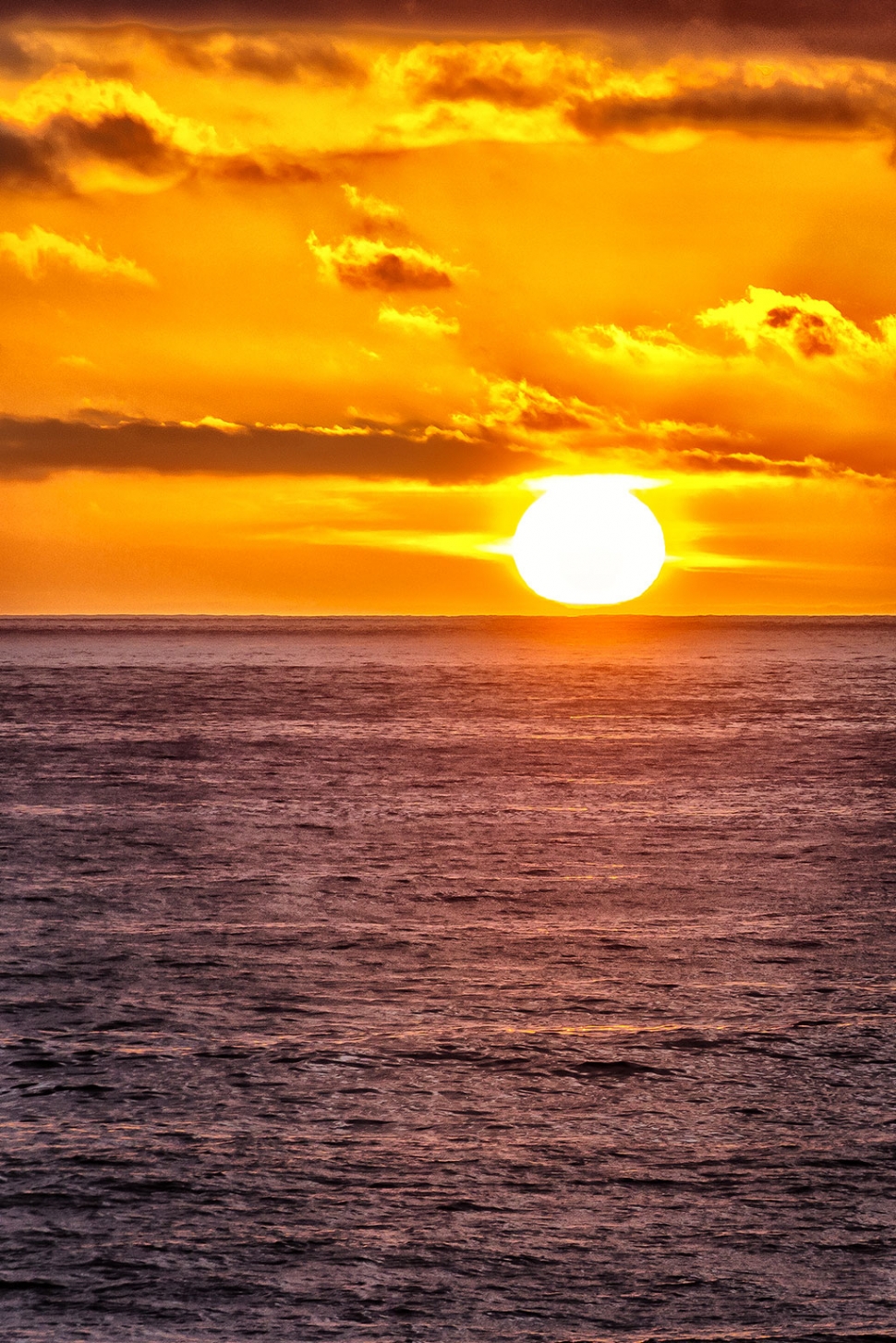|
Focus on Photography
 Photo of the Week: "The sun gently kissing the ocean goodnight" by Bob Crum. Photo data: Canon 7DMKII camera, manual mode, Tamron 16-300mm lens @151mm, exposure; ISO 200, aperture f/7.1, 1/160th second shutter speed. By Bob Crum — Wednesday, January 16th, 2019
Lunar eclipse!
 Bob Crum Mark your calendar! An exciting total lunar eclipse happens Sunday, January 20. More than just a lunar eclipse, it's a “Super Blood Wolf Moon” eclipse. A blood moon because during the total eclipse, the moon will appear reddish, the result of the atmosphere acting like a colored photographic filter bending red sunlight into the Earth's shadow and filtering out blue light. Also, a January full moon is traditionally called the wolf moon. Wolves howl to communicate saying 'I'm here' to the pack and to tell intruders to go away. Wolves are nocturnal animals. When the urge to howl overcomes wolves, they project their howl upward towards the light of the full moon for the sound to carry further. Hence the term 'howling at the moon.' Beware, it's futile to resist the urge to howl. Casual photos of the eclipse can be captured with, ahem, a cellphone. However, if you want that 'special' epic photo, well, you know that a dedicated camera is essential. Planning is important. If you intend to include something in the foreground, scout suitable shot locations beforehand. You'll see where the moon will rise and where you will need to be for your desired composition. Because the 'light' will vary greatly, shooting a total lunar eclipse is an enormous challenge. Auto mode is useless. Here are some general guidelines from Canon: At full Moon: f/11, 1/100th sec, ISO 100 or at a higher ISO: f/11, ISO 200 and 1/200th sec. At partial Eclipse: f/5.6, 1/125th sec, ISO 400 for the half moon. As it gets increasingly darker, open the lens aperture to the max and increase the ISO while decreasing the shutter speed as needed for proper exposure. Take the ISO as high as necessary to prevent the shutter speed from going too slow. Exposure is more important than subsequent image noise from the high ISO setting. Lens selection is equally important. The longer the focal length, 300mm for example - which is still minimal - the more the moon will fill the composition frame. Remember, as the light becomes dim during the total eclipse, open the aperture wide and increase ISO to allow the fastest shutter speed possible. Even so, a somewhat slow shutter speed might be required for proper exposure. Thus, a tripod becomes essential. The longer the focal length of the lens the more important a tripod becomes. Flexibility is important. Adjust ISO, aperture and shutter speed for appropriate exposure throughout the eclipse sequence as needed. If possible, use bracketing and consider spot metering. Keep the faith! It'll grow dark as the heavenly bodies align so focus will be difficult. With the moon 238,900 miles from earth, infinity focus will work just fine. If you choose to have a foreground in the image, be aware that where you shoot from is important because depth of field will decrease as you open the aperture. Plan accordingly. Relax and be patient. Unlike shooting a relatively shorter solar eclipse, the lunar eclipse is a much slower event. You'll have time to adjust camera settings for proper exposure. Use the 'envy' filter to photograph the moon's green cheese during the penumbra. Photo of the week reveals the sun setting and gently, sweetly, kissing the ocean goodnight. Send comments, suggestions or questions to: focusonphotography@earthlink.net |
